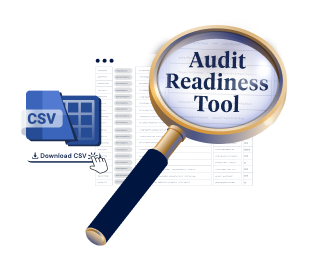Understanding the Intent and Expectations
Standard 3 outlines how providers must deliver all funded aged care services. It covers personal, social, clinical, and support services and clearly communicates that they must align with individuals' needs, goals, and preferences. Standard 3 reinforces that care must be safe, effective, person-centred, coordinated, and promote quality of life. Importantly, it requires services based on assessment, planning, and partnership, supported by a competent workforce.
This standard operationalises the concepts of dignity, autonomy, and independence through service provisions, which necessitate a broad training strategy to support interprofessional roles across your workforce.
Standard 3 Outcomes and Related Training Requirements
Four key outcomes are associated with Standard 3, each of which has a dedicated need for training.
| Outcome | Focus of Training |
|---|---|
| 3.1 Assessment and planning | Goal setting, risk identification, reablement, documenting needs and preferences, advance care planning, shared decision-making. |
| 3.2 Delivery of care and services | Person-centred care, personal care techniques, reablement practices, responding to changing needs, clinical handovers, respectful service delivery. |
| 3.3 Communication for safety and quality | Communication skills, health literacy, documentation, escalation processes, clinical handover, and interpreter use. |
| 3.4 Planning and coordination | Service mapping, continuity of care, rostering, multidisciplinary coordination, and transition planning. |
What Training is Required?
Training under this standard should be role-specific and support safe, person-centred care in diverse environments.
| Topic | Required Knowledge and Skills |
|---|---|
| Assessment and planning | Training on assessment tools, goal-based care planning, involving families, identifying preferences, documenting in plain language, and reviewing plans. |
| Preventative and reablement care | Supporting independence, falls prevention, functional mobility, enabling environments, and restorative approaches. |
| Documentation and communication | Accurate recordkeeping, shift handovers, incident reporting, using interpreter services, and communicating respectfully across language/cognitive barriers. |
| Risk and escalation | Early warning signs, managing deteriorating residents, escalation protocols, and incident follow-up. |
| Transitions of care and continuity | Discharge processes, transitional documentation, and coordinating with hospitals or community services. |
Who Needs Training?
Training should be assigned based on the scope and relevance to an individual’s role.
| Staff Role | Relevant Training Needs |
|---|---|
| Care workers | Assessment skills, cultural safety, reablement, documentation, and managing risks in daily care. |
| Registered and enrolled nurses | Care planning, coordination, incident response, clinical handover, and medication management support. |
| Lifestyle and therapy staff | Collaborative goal-setting, functional assessments, and engagement-based planning. |
| Managers and team leaders | Supervision, rostering for continuity of care and skill mix, and quality indicator outcome monitoring. |
What Will Be Audited?
Summary of Evidence Items: Standard 3
Auditors assessing for conformance with Standard 3 are directed to determine whether care is provided by the individual’s current needs, preferences and care plan.
Below are the types and examples of evidence auditors may request during an audit.
| Evidence Type | Examples |
|---|---|
| Documents and records |
|
| Governing body feedback |
|
| Management feedback |
|
| Worker feedback |
|
| Third-party feedback |
|
| Experience of individuals |
|
| Observations |
|
| Care outcomes |
|

Ensure your organisation is prepared for your first audit under the strengthened Standards.
Summary of Training Requirements - Standard 3: The Care and Services
Standard 3 focuses on two major themes: Assessment and planning, and delivering comprehensive care and services. These themes connect closely with Standard 5: Clinical Care and together form the foundation of safe, person-centred aged care.
As such, Standard 3 has a large volume of evidence items. The table above shows that evidence items include policies, care plans, staff training, communication processes, and observed practices. Whilst this list may initially seem overwhelming, remember that it is all aimed at ensuring care is tailored, coordinated, and responsive to each individual’s needs, goals, and preferences.
Ultimately, Standard 3 highlights that high-quality care depends on a skilled and responsive workforce. Targeted training in assessment, planning, and care delivery supports audit readiness and promotes dignity, independence, and a better quality of life for older people.
List of Ausmed Modules on Standard 3
The following modules from the Ausmed Library help you meet the education and training requirements of Standard 3.
Explore the full library here.



